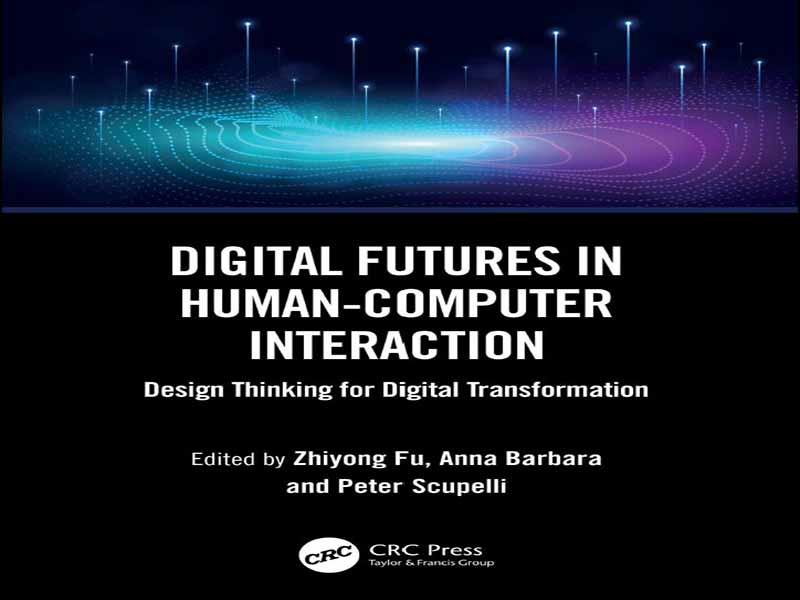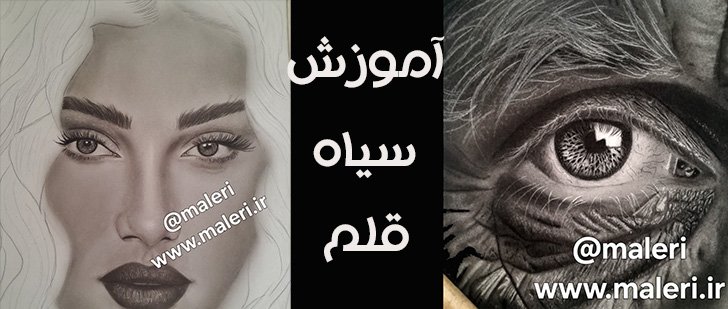- عنوان کتاب: Digital Futures in Human-Computer Interaction
- نویسنده: Zhiyong Fu
- حوزه: تحول دیجیتال
- سال انتشار: 2025
- تعداد صفحه: 220
- زبان اصلی: انگلیسی
- نوع فایل: pdf
- حجم فایل: 8.6 مگابایت
در عصری که با پیشرفت های سریع تکنولوژی مشخص شده است، تحول دیجیتال به سنگ بنای نوآوری در صنایع تبدیل شده است. تعامل انسان و کامپیوتر (HCI)، به عنوان حوزه ای که فناوری و تعامل انسانی در آن تلاقی می کنند، در خط مقدم این تحول قرار دارد و با فرصت ها و چالش های بی سابقه ای مواجه است. در این چشم انداز به سرعت در حال تحول، تفکر آینده به عنوان یک ابزار ضروری برای هدایت نوآوری در HCI ظاهر شده است، و روش جدیدی از تفکر را ارائه می دهد که به ما قدرت می دهد تا از حال عبور کنیم، تصور کنیم، و اکوسیستم های تکنولوژیکی آینده و ساختارهای اجتماعی را شکل دهیم. آیندهنگاری، مفهومی مرکزی در تفکر آینده، صرفاً ابزاری برای پیشبینی نیست، بلکه یک فلسفه طراحی است. با استفاده از تخیل، داستان و برون یابی، حوزه HCI آماده است تا احتمالات جدید را کشف کند و از محدودیت های پارادایم های تکنولوژیکی و اجتماعی فعلی عبور کند. این کتاب به رابطه پویا بین تحول دیجیتال و تفکر آینده می پردازد و تحلیلی جامع از روندهای آینده، سواد آینده و کاربردهای عملی ارائه می دهد. هدف آن روشن کردن این است که چگونه این استراتژیها میتوانند به شکلدهی آیندههای ارجح در حوزه HCI کمک کنند، که نه تنها شامل نوآوریهای فنآوری، بلکه همچنین تأمل عمیق در تأثیرات اجتماعی است. همانطور که HCI در حال تکامل است، مسئولیت رو به رشدی برای اطمینان از اینکه فناوری هایی که ایجاد می کنیم به آینده ای پایدار و انسان محور کمک می کند وجود دارد. ساختار این کتاب به گونه ای است که هم بینش های نظری و هم ابزارهای عملی را برای علاقه مندان به آینده HCI ارائه می دهد. بخش I با بررسی روندهای آتی در HCI پایه و اساس را ایجاد می کند. این مقاله با تجزیه و تحلیل اثرات تحول دیجیتال بر صنایعی مانند امور مالی، مراقبت های بهداشتی و آموزش آغاز می شود و سپس فناوری های نوظهور را در زمینه هایی مانند خدمات مراقبتی و موزه ها بررسی می کند. بخش دوم به سواد آینده می پردازد، روش های تفکر آینده را بررسی می کند، رویکردهای آموزشی برای فناوری سرگرمی را بررسی می کند، و بر تفکر بلندمدت در سیستم های محصول-خدمات دیجیتال، به ویژه برای شرکت های کوچک و متوسط (SMEs) تاکید می کند. بخش سوم تمرکز را به کاربردها و شایستگیهای عملی تغییر میدهد، که روشهای فعلی در آیندههای طراحی، همدلی هوش مصنوعی در متاورس، مصنوعات طراحی نظری، روایتهای تعاملی، و استراتژیهای ارزیابی عاطفی در تعاملات انسان و هوش مصنوعی را پوشش میدهد. بخش IV با بحث در مورد پیامدهای اجتماعی گسترده تر این روندهای نوظهور به پایان می رسد. روشهای آینده طراحی مبتنی بر پایداری، تفکر زیستمحیطی در HCI، تأثیرات اجتماعی تحقیقات موج سوم HCI، و تأثیر فناوری دیجیتال بر رفاه شخصی و کیفیت زندگی را بررسی میکند. در سراسر کتاب، تعادل دقیقی بین کاوش نظری و کاربرد عملی ایجاد شده است. با تمرکز بر نوآوری های تکنولوژیکی و طراحی انسان محور، به چالش های در حال تحول در HCI می پردازد و در عین حال احتمالات آینده را پیش بینی می کند. مطالعات موردی و مثالهای دنیای واقعی، بحث را غنیتر میکنند و درک جامعی از این که چگونه تفکر آینده میتواند تحقیق و عمل HCI را هدایت کند، ارائه میکند. همانطور که تحول دیجیتال به شتاب ادامه میدهد، HCI با چالشها و فرصتهای پیچیدهتری مواجه خواهد شد. آیندهاندیشی چارچوب حیاتی مورد نیاز برای هدایت توسعه فناوری به سمت نتایج پایدارتر و از نظر اخلاقی مسئولانهتر را ارائه میدهد. با تشویق به تأمل در شیوههای فعلی و پیشبینی متفکرانه به آینده، میتوانیم آینده فناوری فراگیرتر و متعادلتری را شکل دهیم. به طور خاص، حوزههایی مانند هوش مصنوعی و فراجهان فرصتهای قابلتوجهی را ارائه میکنند، اما آنها همچنین نیازمند بررسی دقیق اثرات اجتماعی و زیست محیطی بلندمدت خود هستند. این کتاب منبع ارزشمندی برای هر کسی است که به دنبال کشف تلاقی فناوری، طراحی و آیندهای است که در پیش است. این کتاب از خوانندگان رشتههای مختلف طراحی – از جمله طراحی خدمات، طراحی محصول و نوآوری اجتماعی – دعوت میکند تا از قدرت آیندهاندیشی در شکلدهی فردایی بهتر استفاده کنند، جایی که فناوری و بشریت با هم در هماهنگی تکامل مییابند.
In an era marked by rapid technological advancements, digital transformation has become a cornerstone of innovation across industries. Human-Computer Interaction (HCI), as a field where technology and human interaction intersect, is at the forefront of this transformation, facing unprecedented opportunities and challenges. Within this fast-evolving landscape, futures thinking has emerged as an essential tool to drive innovation in HCI, providing a new way of thinking that empowers us to tran¬scend the present, envision, and shape future technological ecosystems and soci¬etal structures. Futurescaping, a central concept in futures thinking, is not merely a tool for prediction but a design philosophy. By leveraging imagination, fiction, and extrapolation, the HCI field is poised to explore new possibilities and break through the limitations of current technological and social paradigms. This book delves into the dynamic relationship between digital transformation and futures thinking, providing a comprehensive analysis of future trends, futures literacy, and practical applications. It aims to illuminate how these strategies can help shape preferable futures in the HCI domain, involving not only technological innovation but also deep reflection on societal impacts. As HCI evolves, there is a growing responsibility to ensure that the technologies we create contribute to a sus¬tainable and human-centered future. The book is structured to offer both theoretical insights and practical tools for those interested in the future of HCI. Section I establishes the foundation by examining future trends in HCI. It opens with an analysis of the effects of digital transformation on industries such as finance, healthcare, and education, and then explores emerging technologies in areas like care services and museums. Section II delves into futures literacy, examining methodologies for futures thinking, exploring pedagogical approaches for entertainment technology, and emphasizing long-term thinking in digital product-service systems, especially for small and medium-sized enterprises (SMEs). Section III shifts focus to practical applications and competen¬cies, covering current methods in design futures, AI empathy in the metaverse, spec¬ulative design artifacts, interactive narratives, and affective evaluation strategies in human-AI interactions. Section IV concludes with a discussion of the broader soci¬etal implications of these emerging trends. It explores sustainability-oriented design futures methods, ecological thinking in HCI, the societal impacts of third-wave HCI research, and the influence of digital technology on personal well-being and quality of life. Throughout the book, a careful balance is struck between theoretical explora¬tion and practical application. By focusing on both technological innovation and human-centered design, it addresses the evolving challenges in HCI while anticipat¬ing future possibilities. Case studies and real-world examples enrich the discussion, providing a comprehensive understanding of how futures thinking can guide HCI research and practice. As digital transformation continues to accelerate, HCI will face increasingly com¬plex challenges and opportunities. Futures thinking offers the critical framework needed to guide technological development toward more sustainable and ethically responsible outcomes. By encouraging reflection on current practices and thoughtful projection into the future, we can shape a more inclusive and balanced technological future. In particular, areas such as artificial intelligence and the metaverse present significant opportunities, but they also require careful consideration of their long-term social and ecological impacts. This book is a valuable resource for anyone seeking to explore the intersection of technology, design, and the futures that lie ahead. It invites readers from diverse design disciplines—including service design, product design, and social innovation—to harness the power of futures thinking in shaping a better tomorrow, where tech¬nology and humanity evolve together in harmony.
این کتاب را میتوانید از لینک زیر بصورت رایگان دانلود کنید:




































نظرات کاربران